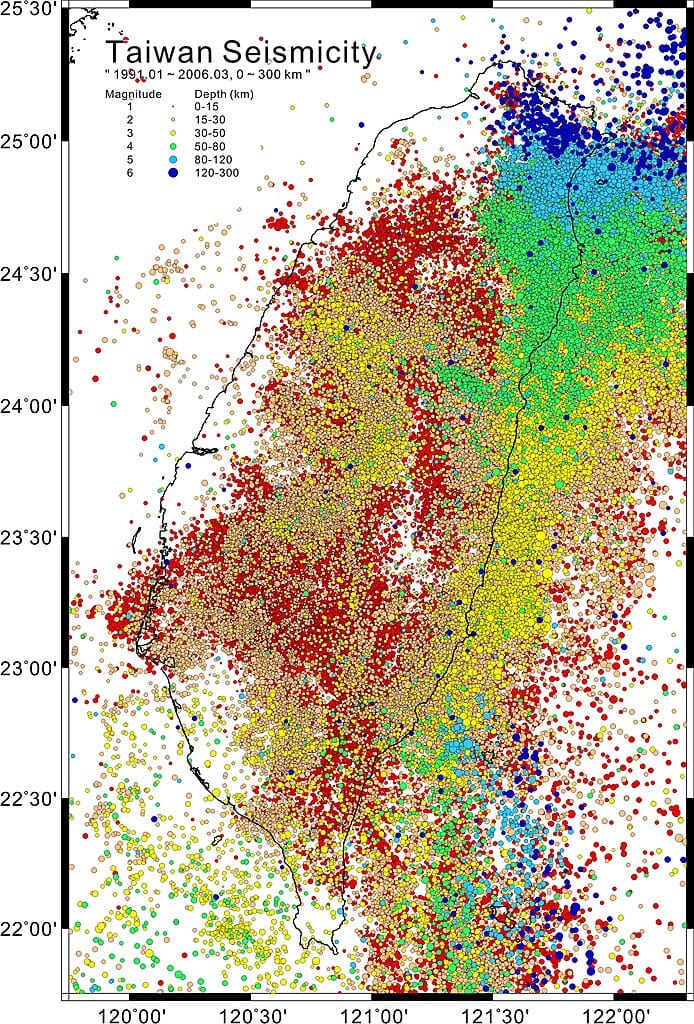
Table of Contents
Recent Earthquake in Taiwan and Its Impact on the Region
Taiwan experienced a significant earthquake that sent shockwaves across the region, including nearby countries like the Philippines. This seismic activity has once again highlighted the importance of earthquake preparedness, especially in areas prone to tectonic movements. Taiwan, located along the Pacific Ring of Fire, is no stranger to earthquakes. The island sits at the convergence of the Philippine Sea Plate and the Eurasian Plate, making it a hotspot for tectonic activity.
The earthquake caused widespread disruption, with reports of damaged infrastructure and buildings. Fortunately, Taiwan’s stringent building codes and emphasis on earthquake-resistant architecture have helped mitigate the impact. As the news unfolds, neighboring countries, including the Philippines, are reminded of the importance of enhancing their own disaster preparedness.
Earthquake-Prone Areas in the Philippines
The Philippines, like Taiwan, lies along the Pacific Ring of Fire. This geographic location makes it vulnerable to earthquakes and volcanic eruptions. Notable fault lines, such as the West Valley Fault and the Philippine Trench, have been responsible for significant seismic activity in the past.
In popular tourist destinations like Palawan, where the “Coron to El Nido” route is a major attraction, the risk of earthquakes may seem less immediate compared to areas like Luzon or Mindanao. However, ensuring safety measures for residents and tourists remains a priority.
The Role of Earthquake-Resistant Architecture
Earthquake-resistant architecture plays a crucial role in minimizing damage and casualties during seismic events. Taiwan has set an example with its advanced construction techniques, which include flexible building materials and shock-absorbing foundations. In the Philippines, adopting similar practices is essential, especially in urban centers and tourist-heavy locations like Coron and El Nido.
In areas like Palawan, where many structures are made of lighter materials such as wood and bamboo, the focus is often on traditional designs that can withstand moderate earthquakes. However, as tourism grows and more concrete structures are built, there is a pressing need to incorporate modern earthquake-resistant technology.
Safety Tips for Divers During an Earthquake
For those in the water, particularly divers exploring some of the “best diving spots in the Philippines,” an earthquake presents unique challenges. Here are some safety tips to keep in mind:
1. If You Are Diving:
- Stay Calm: Panicking can lead to accidents underwater. Try to maintain control of your breathing and movements.
- Ascend Safely: If the shaking affects your dive, ascend slowly to avoid decompression sickness. Follow the standard safety stops.
- Stay Alert for Aftershocks: Earthquakes often come with aftershocks. Be cautious when planning subsequent dives.
2. If You Are on a Boat:
- Move Away from Shore: Tsunamis are a potential hazard after an earthquake. Boats are generally safer in deeper water.
- Stay Informed: Use communication devices to receive updates from local authorities.
3. If You Are Snorkeling:
- Look for Safe Landmarks: Identify the nearest safe spot onshore and swim there calmly if needed.
- Monitor Water Levels: A sudden drop in water levels may indicate a tsunami. Move to higher ground immediately.
Earthquake Preparedness in Tourist Areas
Tourism hubs like Coron and El Nido in Palawan are famous for their pristine beaches, lagoons, and dive sites. While they are not as seismically active as other parts of the Philippines, it is still vital to have safety measures in place.
Infrastructure and Planning
Local governments and businesses should prioritize the construction of earthquake-resistant structures. Hotels, resorts, and diving centers should conduct regular safety drills and ensure that emergency equipment is readily available.
Educating Tourists
Tourists visiting these areas should be informed about earthquake risks and safety protocols. Resorts can provide brochures or short briefings on what to do during an earthquake or tsunami.
Emergency Response Systems
Establishing a robust emergency response system is critical. This includes setting up warning systems, evacuation routes, and safe zones for tourists and residents alike.
Lessons from Taiwan: How the Philippines Can Improve
Taiwan’s proactive approach to earthquake preparedness offers valuable lessons for the Philippines. Key takeaways include:
- Strict Enforcement of Building Codes: Ensuring that all new constructions adhere to earthquake-resistant standards.
- Public Awareness Campaigns: Educating citizens about earthquake safety measures through community programs and media.
- Technology and Innovation: Investing in early warning systems and earthquake monitoring technology.
Why Earthquake Preparedness Matters for Tourism
Tourism is a significant contributor to the economy of both Taiwan and the Philippines. Destinations like Palawan, which attract divers seeking the “best diving experiences in the Philippines,” must ensure that safety is a top priority. Any perception of unpreparedness can deter tourists, impacting local livelihoods.
The “Coron to El Nido” Connection
The popular “Coron to El Nido” route is a prime example of an area that benefits from proactive disaster planning. With thousands of tourists traveling between these two destinations annually, ensuring their safety during natural disasters is paramount. This includes having clear evacuation plans and trained staff who can guide tourists during emergencies.
Conclusion
The recent earthquake in Taiwan serves as a stark reminder of the importance of earthquake preparedness across the region. For countries like the Philippines, learning from Taiwan’s experience and investing in earthquake-resistant infrastructure, public awareness, and emergency response systems is crucial.
Whether you are exploring the stunning underwater world on the “Coron to El Nido” route or enjoying the “best diving Philippines” safety should always come first. By prioritizing preparedness, the Philippines can protect both its residents and the tourists who contribute to its vibrant economy.
